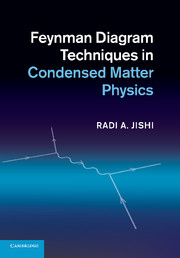Book contents
- Frontmatter
- Contents
- Preface
- 1 A brief review of quantum mechanics
- 2 Single-particle states
- 3 Second quantization
- 4 The electron gas
- 5 A brief review of statistical mechanics
- 6 Real-time Green's and correlation functions
- 7 Applications of real-time Green's functions
- 8 Imaginary-time Green's and correlation functions
- 9 Diagrammatic techniques
- 10 Electron gas: a diagrammatic approach
- 11 Phonons, photons, and electrons
- 12 Superconductivity
- 13 Nonequilibrium Green's function
- Appendix A Second quantized form of operators
- Appendix B Completing the proof of Dzyaloshinski's rules
- Appendix C Lattice vibrations in three dimensions
- Appendix D Electron-phonon interaction in polar crystals
- References
- Index
3 - Second quantization
Published online by Cambridge University Press: 05 April 2013
- Frontmatter
- Contents
- Preface
- 1 A brief review of quantum mechanics
- 2 Single-particle states
- 3 Second quantization
- 4 The electron gas
- 5 A brief review of statistical mechanics
- 6 Real-time Green's and correlation functions
- 7 Applications of real-time Green's functions
- 8 Imaginary-time Green's and correlation functions
- 9 Diagrammatic techniques
- 10 Electron gas: a diagrammatic approach
- 11 Phonons, photons, and electrons
- 12 Superconductivity
- 13 Nonequilibrium Green's function
- Appendix A Second quantized form of operators
- Appendix B Completing the proof of Dzyaloshinski's rules
- Appendix C Lattice vibrations in three dimensions
- Appendix D Electron-phonon interaction in polar crystals
- References
- Index
Summary
Nothing can be made out of nothing.
William Shakespeare, King LearHistorically, quantization of the motion of particles was developed first. The state was described by a wave function and observables by operators. When dealing with interactions between particles and fields, such as the electromagnetic field, the fields were treated classically. Classical field equations look like the quantum mechanical equations for the wave function of the field quanta. For example, the Klein–Gordon classical field equation is similar to the quantum mechanical wave equation for a relativistic spinless particle. Quantizing the fields, leading to quantum field theory, appears to be quantizing a theory that has already been quantized; hence the name “second quantization.” In reality, there is only one quantization and one quantum theory.
The method of second quantization is important in the study of many-particle systems. It enables us to express many-body operators in terms of creation and annihilation operators, thus rendering calculations less cumbersome. Moreover, the method makes it possible to treat systems with a variable number of particles; that is why the method initially emerged in the context of quantum field theory.
In Chapter 1 we indicated that any one-particle wave function may be expanded in a complete set of states. In this chapter, we show that products of single-particle states, when properly symmetrized, form an orthonormal basis for the expansion of the wave function of an N-particle system.
- Type
- Chapter
- Information
- Feynman Diagram Techniques in Condensed Matter Physics , pp. 37 - 64Publisher: Cambridge University PressPrint publication year: 2013



